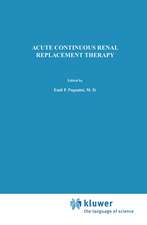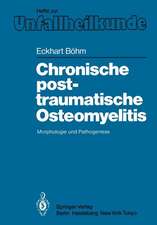Molecular Neurosurgery with Targeted Toxins
Editat de Ronald G. Wiley, Douglas A. Lappien Limba Engleză Hardback – 22 mar 2005
| Toate formatele și edițiile | Preț | Express |
|---|---|---|
| Paperback (1) | 773.71 lei 38-44 zile | |
| Humana Press Inc. – 16 dec 2010 | 773.71 lei 38-44 zile | |
| Hardback (1) | 1293.03 lei 6-8 săpt. | |
| Humana Press Inc. – 22 mar 2005 | 1293.03 lei 6-8 săpt. |
Preț: 1293.03 lei
Preț vechi: 1361.08 lei
-5% Nou
Puncte Express: 1940
Preț estimativ în valută:
247.41€ • 259.02$ • 204.72£
247.41€ • 259.02$ • 204.72£
Carte tipărită la comandă
Livrare economică 07-21 aprilie
Preluare comenzi: 021 569.72.76
Specificații
ISBN-13: 9781588291998
ISBN-10: 1588291995
Pagini: 328
Ilustrații: XII, 312 p.
Dimensiuni: 155 x 235 x 26 mm
Greutate: 0.65 kg
Ediția:2005
Editura: Humana Press Inc.
Colecția Humana
Locul publicării:Totowa, NJ, United States
ISBN-10: 1588291995
Pagini: 328
Ilustrații: XII, 312 p.
Dimensiuni: 155 x 235 x 26 mm
Greutate: 0.65 kg
Ediția:2005
Editura: Humana Press Inc.
Colecția Humana
Locul publicării:Totowa, NJ, United States
Public țintă
Professional/practitionerCuprins
to Molecular Neurosurgery.- Ribosome-Inactivating Proteins.- Biochemical, Physiological, and Behavioral Characterizations of the Cholinergic Basal Forebrain Lesion Produced by 192 IgG-Saporin.- Basal Forebrain Cholinergic Lesion by 192 IgG-Saporin.- 192 IgG-Saporin-Induced Partial Cortical Cholinergic Deafferentation as a Model for Determining the Interactions Between Brain Aging and Neurodevelopmental Defects in the Cortical Cholinergic Input System.- Exploring the Role of Acetylcholine in Primate Cognition Using Me20.4 IgG-Saporin.- Cortical Cholinergic Deafferentation Induces A? Deposition.- Chemical Dissection of Brain Glucoregulatory Circuitry.- Cardiovascular Deficits After Lesions of C1 Adrenergic Neurons With a Saporin-Based Immunotoxin.- Saporin Conjugates and Pain.- The Use of Saporin Conjugates to Dissect Neurons Responsible for Sleep and Wakefulness.- Isolectin IB4-Mediated Cytotoxic Targeting of Sensory Neurons.- B Fragment of Cholera Toxin Conjugated to Saporin.
Recenzii
"...a good purchase for most neuroscience and neurology libraries." - Doody's Health Science Book Review Journal
Textul de pe ultima copertă
The use of targeted cytotoxins to make highly selective neural lesions for both experimental and clinical purposes has already provided important animal models for diseases such as Alzheimer's, and holds great promise for research and clinical application to pain. In Molecular Neurosurgery With Targeted Toxins, pioneers in the field describe their hands-on experience with the experimental use of these toxins. The authors focus on the highly successful use of the immunotoxins, 192 IgG-saporin and ME20.4-saporin, to lesion the cholinergic basal forebrain in order to model the behavior, anatomy, physiology, and pharmacology of Alzheimer's disease in animals. Also discussed are the uses of anti-DBH-saporin immunotoxin to make remarkably selective lesions of catecholaminergic neurons, hypocretin-saporin that can produce narcoleptic animals, and other saporin conjugates, such as neuropeptide-saporin conjugates for pain research and cholera toxin B chain-saporin to produce a model of central nervous system demyelination. Overview perspectives and, in some cases, more practical details are provided that allow the reader to appreciate exactly what is involved in using these agents.
Both practical and theoretical, Molecular Neurosurgery With Targeted Toxins provides readers with not only the background to understand these techniques, but also numerous real-life examples that can be readily adapted to new purposes and an ever-increasing number of new targeted toxins.
Both practical and theoretical, Molecular Neurosurgery With Targeted Toxins provides readers with not only the background to understand these techniques, but also numerous real-life examples that can be readily adapted to new purposes and an ever-increasing number of new targeted toxins.
Caracteristici
Includes supplementary material: sn.pub/extras




























